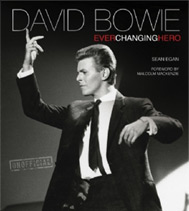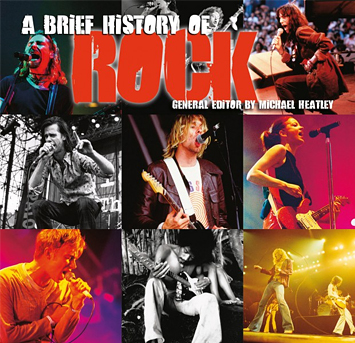c. 1390–1453 English composer Dunstaple was the best known of an influential group of English composers which included Power. To judge by the number of his works in continental manuscripts, he was probably one of the most important composers of his day in Europe, although he may not have travelled particularly widely. He wrote early Mass cycles, including ...
(Fran-cha’-sko Lan-de’-ne) c. 1325–97 Italian composer Blind as the result of an attack of smallpox as a young child, Landini turned to music, learning to play the organ and several other instruments. He also sang and wrote poetry. Over 150 musical works by him survive, forming over one quarter of the known repertory of the fourteenth century. Most of ...
c. 1562–1628 English composer and keyboard player The English composer and keyboard player John Bull was by all evidence an extraordinary musician. His name headed the list of members of the Chapel Royal who attended the funeral of Elizabeth I in 1603. He was also an organ-builder and a scholar. A Catholic with a difficult personality, he often found himself ...
1563–1626 English composer and lutenist Dowland was the greatest lute-song composer of the early seventeenth century. His conversion to Catholicism in the early 1580s may have contributed to his lack of professional success. Twice disappointed in applications for a post at court, he travelled and then worked on the continent. By November 1598 he was employed at the court of ...
(An-dra’-a Gab-re-a’-le) c. 1510–86 Italian composer After spending some time in Munich as a colleague of Lassus, Gabrieli became maestro di cappella at St Mark’s, Venice in 1566. There, with the resources of its great choir at his disposal, he composed an impressive repertory of music for various combinations of voices and instruments. His style – in sacred ...
1583–1625 English composer Although he made his living as a keyboard player, it is for his vocal music that Gibbons is best remembered. His anthems, for combinations of soloist, choir and instruments, are still heard in churches and concert halls. In the simple but deeply moving This is the Record of John, a five-part chorus echoes ...
(Or-land’ de Las’soos) 1532–94 Franco-Flemish composer Lassus went to Italy at the age of 12 as a singer in the choir of Ferrante Gonzaga, a minor member of the important family of music patrons who ruled the duchy of Mantua. He spent the next 10 years in Italy, travelling to Naples and then Rome, where for a time he ...
c. 1490–1545 English composer Taverner’s career fell entirely within the reign of Henry VIII. Apparently on good terms with the king’s most powerful ministers (first with Wolsey and then with Cromwell), he must have been an astute politician. Most of his music, which is thought to have been composed mostly in the 1520s and 30s, is firmly in the ...
1574–1638 English composer Although not as prolific as some of his contemporaries, Wilbye made a substantial contribution to the English madrigal. Like Weelkes, he was influenced by Morley’s light-hearted canzonets and ballets; later he turned to a more serious style, producing some of the repertory’s most poignant works. Madrigals like ‘Weepe O Mine Eies’ (1598) and ‘Draw on ...
A blues guitarist best known for his slide-guitar work, Sonny Landreth (b. 1951) was born in Canton, Mississippi. The family relocated to Lafayette, Louisiana, where Sonny was immersed in the area’s swamp-pop and Zydeco music. Beginning as a trumpeter, he was already a virtuoso guitarist in his teens. His earliest role model was Scotty Moore, ...
Classical-guitar legend Andrés Segovia (1894–1987) was born in the city of Linares, Spain and reared in Granada. He received musical instruction at an early age and was tutored in piano and violin but warmed to neither. When he heard the guitar in the home of a friend, however, he was hooked. Disregarding the objections of his family and ...
John Fahey (1939–2001) was an American fingerstyle guitarist, composer, folklorist, intellectual and eccentric. Influenced by the folk and blues traditions of America, he incorporated classical, Brazilian, Indian and abstract music into his works. His moody instrumentals foreshadowed new-age music, but Fahey’s intensity makes him more closely aligned with rock. His eclectic approach won him ...
Classical guitarist-composer John Christopher Williams (b. 1941) is a Grammy-Award winning Australian classical guitarist who has explored many styles beyond the classical tradition. John’s father Leonard (Len) Williams was an accomplished guitarist who emigrated from Britain to Australia and was best known there for his jazz playing. He taught John to play guitar, and it soon became apparent that the ...
John Renbourn (b. 1944) is a father of contemporary British folk music and an acknowledged master of fingerstyle guitar. He is best known for his collaboration with guitarist Bert Jansch and his work with the folk group Pentangle. Renbourn created music that fused British and Celtic folk with blues, jazz, British early music, classical guitar and Eastern forms. ...
John Abercrombie (b. 1944) is a stylist who has managed to incorporate flavours of folk and rock along with world-music influences into his jazz-based repertoire. He was a highly influential fusion guitarist in the late Sixties and Seventies and has had an abundant career, working solo and with a multitude of collaborators, including Billy Cobham, Ralph Towner, ...
AUTHORITATIVE
An extensive music information resource, bringing together the talents and expertise of a wide range of editors and musicologists, including Stanley Sadie, Charles Wilson, Paul Du Noyer, Tony Byworth, Bob Allen, Howard Mandel, Cliff Douse, William Schafer, John Wilson...
CURATED
Classical, Rock, Blues, Jazz, Country and more. Flame Tree has been making encyclopaedias and guides about music for over 20 years. Now Flame Tree Pro brings together a huge canon of carefully curated information on genres, styles, artists and instruments. It's a perfect tool for study, and entertaining too, a great companion to our music books.

David Bowie
Fantastic new, unofficial biography covers
his life, music, art and movies, with a
sweep of incredible photographs.


